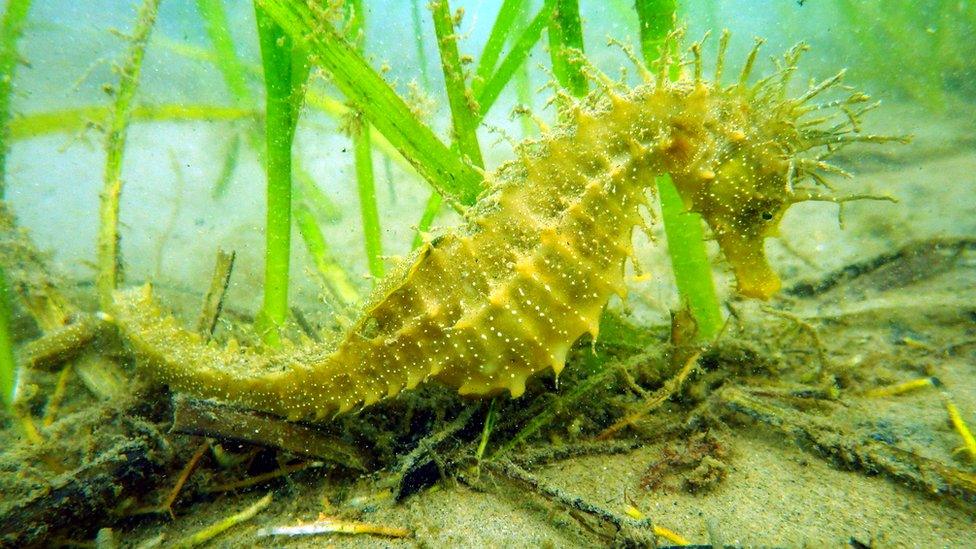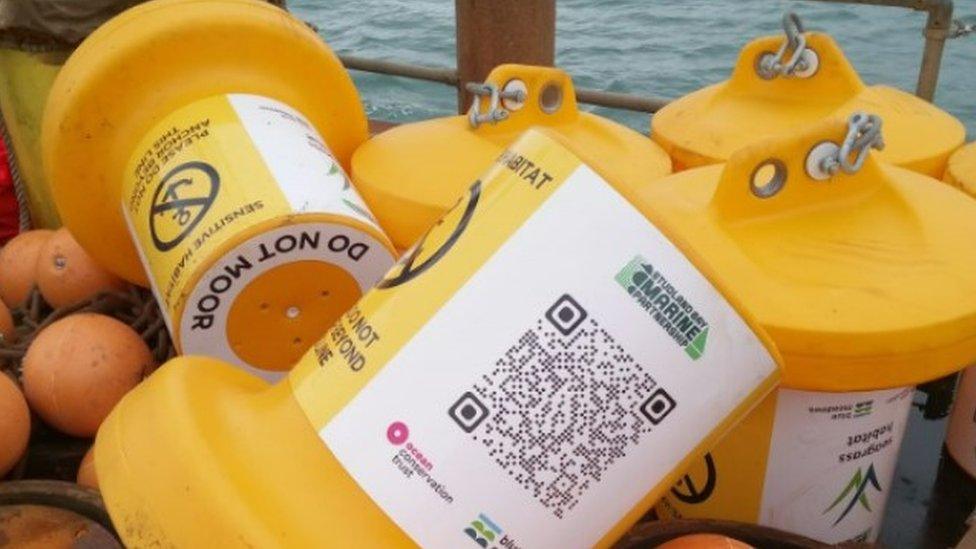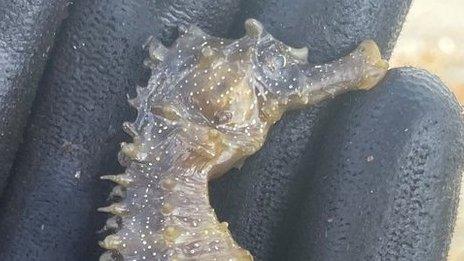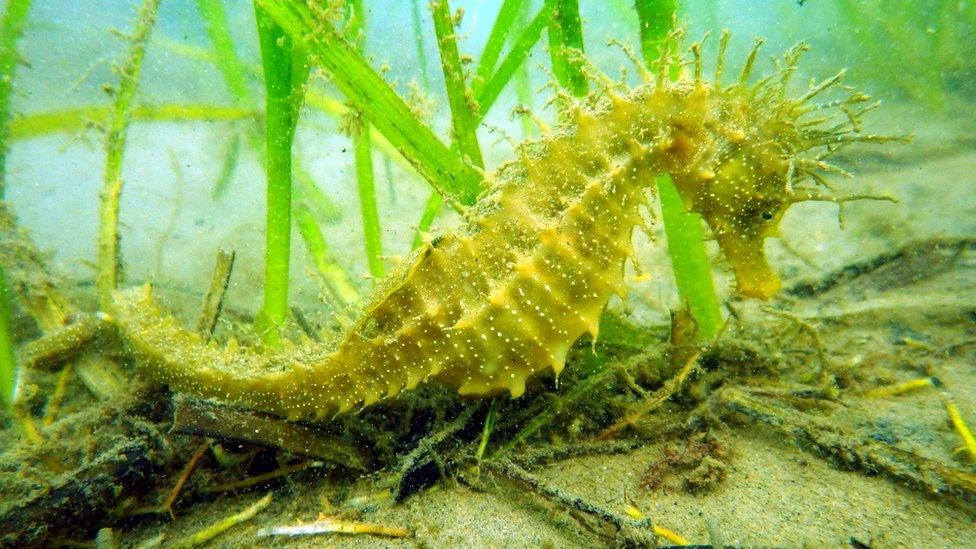Studland Bay: Eco-moorings to protect seahorses set to double
- Published

Dropping anchors has been found to rip up seagrass, home to seahorses, in the bay
Eco-moorings to stop boats dropping their anchors, causing damage to seagrass beds in a Dorset bay, will more than double to almost 100.
The moorings in Studland Bay use a screw driven into the seabed connected to a buoy via a large elasticated rope.
Ten buoys were first put in during 2021, increasing to over 30 last year.
The additional moorings, which boaters pay £10 to use for up to 24 hours via an app, are expected to all be in place for the summer season by early May.

The number of eco-moorings in the bay will increase to 96 this summer
In December 2021, a Voluntary No-anchor Zone (VNAZ) was introduced in the bay, home to a range of species including seahorses, undulate rays and cuttlefish.
The outer edge of the VNAZ is being marked out ahead of the summer season with yellow buoys.
Neil Garrick-Maidment, from The Seahorse Trust charity which started the project in 2008, said: "This is a massive step forward for the protection of the bay.
"It means there will be enough eco-moorings to use, the seagrass is marked and so if you cannot find an eco-mooring to use, then please anchor outside of the marked area."

The outer edge of the VNAZ is being marked with yellow buoys to show where the seagrass is
Set up by the Studland Bay Marine Partnership (SBMP), the £240,000 scheme has been funded by a £186,000 grant from the Marine Management Organisation's Fisheries and Seafood Scheme and fundraising of £54,000.
The fees to use the eco-moorings have been brought in to pay for the £100,00 a year needed to maintain and insure the moorings.
The 96 buoys being put in for this year are made up of 87 buoys put in by SBMP along with nine moorings owned by the Bankes Arms pub, which they have converted to eco-moorings.

Eco-moorings use a helical screw anchor which is driven into the seabed and attached to the mooring buoy via an elastic band
During the winter, the mooring buoys and their elastic lines will be removed from their screws on the seabed to be cleaned, checked and maintained.
A small number of eco-moorings will remain available in Studland Bay during the winter.
Covering six nautical miles along the Dorset coast, Studland Bay was formally designated as a Marine Conservation Zone on 31 May 2019, external.
The SBMP is made up of The Seahorse Trust, boatfolk, National Trust, RYA, Southampton University and a host of conservation and boating organisations.

Seagrass
Across the globe, there are more than 70 species of seagrass, growing in shallow and sheltered coastal areas
It absorbs 10% of the ocean's carbon each year and captures carbon up to 35 times faster than tropical rainforests
Seagrass builds its leaves and roots using carbon, which it extracts from water through the process of photosynthesis, and it holds on to it even after it dies off
Dead plant material decomposes slowly on the ocean floor, and this means that the carbon stored within is eventually buried under the seabed
Seagrass is critically endangered and appears on the EU Red List of habitats
Source: BBC Earth, external

Follow BBC South on Facebook, external, X, external, or Instagram, external. Send your story ideas to south.newsonline@bbc.co.uk or via WhatsApp on 0808 100 2240, external.
- Published18 April 2024

- Published28 November 2023

- Published8 June 2022

- Published28 July 2021
